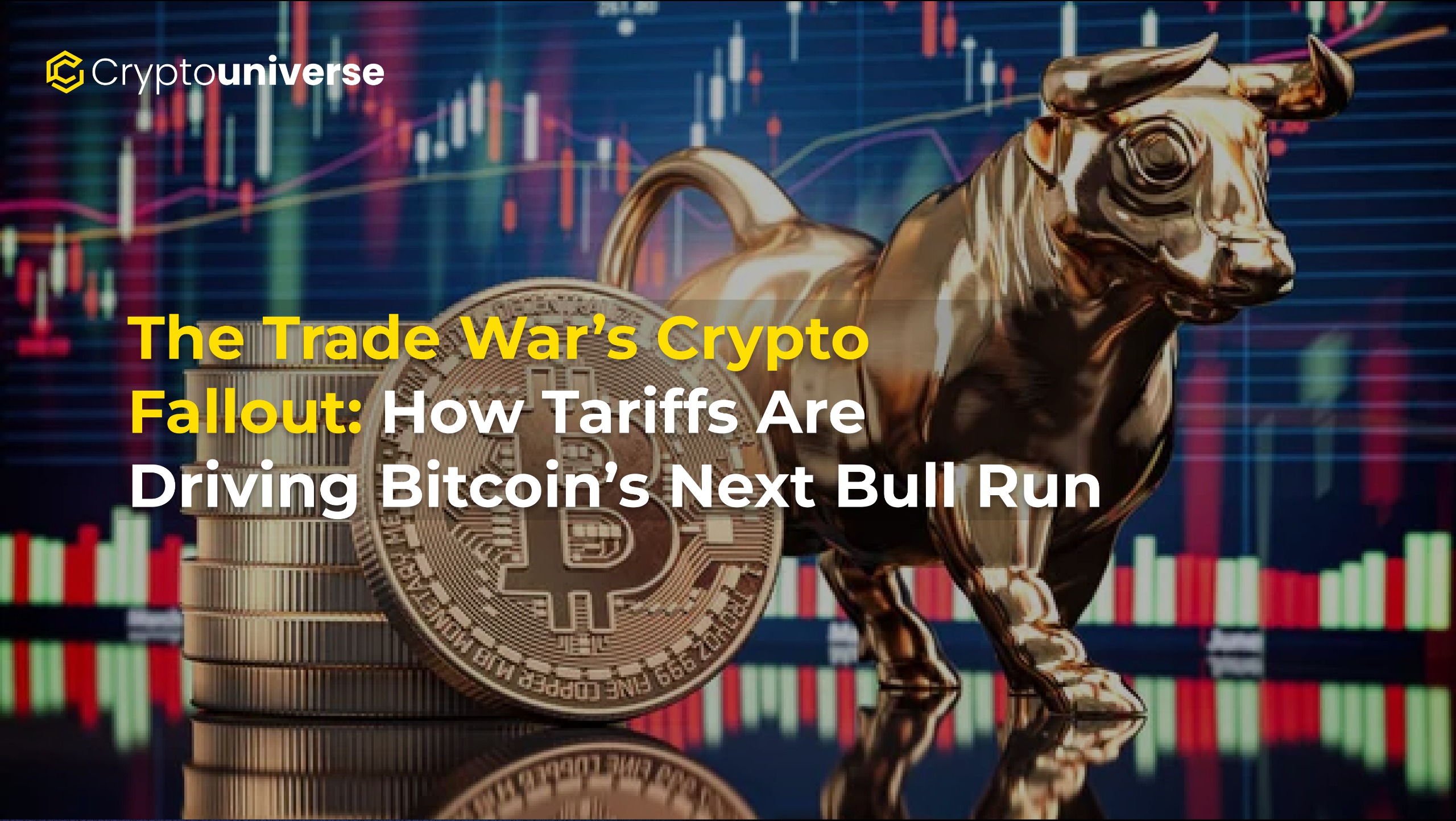How U.S. Tariffs Are Reshaping Crypto: Economic Waves in the Digital Frontier

The worlds of traditional trade policy and cutting-edge cryptocurrency are colliding in unexpected ways. As the U.S. ramps up tariffs on international trade partners—like the 25% levy on Chinese semiconductors and 100% duties on electric vehicles—the ripple effects are reaching far beyond manufacturing and agriculture. They’re sending shockwaves through the cryptocurrency industry, reshaping mining economics, regulatory debates, and global adoption trends. From Bitcoin’s price volatility to clandestine cross-border stablecoin deals, here’s how Washington’s trade wars are rewriting the rules of the crypto universe.
- Tariffs and Economic Uncertainty: Crypto’s Rise as a Hedge Against Chaos

Recent U.S. tariff hikes, part of a broader strategy to curb reliance on foreign manufacturing, have injected fresh volatility into global markets. According to Business Insider, these policies amplify economic uncertainty, pushing investors toward “digital gold” like Bitcoin as a hedge against inflation and geopolitical risks.
- The Safe-Haven Surge: When tariffs disrupt supply chains or spark trade wars, traditional assets (stocks, bonds) often falter. Bitcoin’s 2024 surge—up 12% in a week during U.S.-China tensions—underscores its role as a hedge. Notably, gold saw only a 3% rise in the same period, signaling a generational shift in risk-aversion strategies.
- Institutional Moves: Major firms like MicroStrategy doubled down on Bitcoin acquisitions in Q2 2024, citing tariffs as a long-term inflationary risk. Even Wall Street giants like BlackRock are quietly expanding crypto ETF offerings.
- Regional Impacts: Emerging markets hit hardest by tariffs, such as Mexico (facing U.S. steel duties) and Vietnam (targeted for electronics), saw local Bitcoin trading volumes spike by 40% in May 2024.
Could cryptocurrencies become the ultimate refuge in a tariff-driven downturn? Dive deeper on CryptoUniverse.blog for real-time market analyses and tariff tracking tools.
- Crypto Mining Under Siege: Tariffs, Hardware Shortages, and the Green Pivot
The U.S. crypto mining boom faces a perfect storm: tariffs on imported ASIC miners (up to 25% on Chinese-made hardware), coupled with rising energy costs. With these machines powering 80% of Bitcoin’s global hash rate, the stakes are sky-high.
- Cost Surge and Survival Tactics:
- A single Antminer S21 Hydro now costs U.S. miners 8,000post−tariff,upfrom8,000post−tariff,upfrom6,400 in 2023.
- Publicly traded miners like Marathon Digital are relocating 30% of operations to Africa and South America, where tariffs are avoidable and energy averages $0.03/kWh.
- Small-scale miners are forming coalitions to bulk-order hardware, leveraging loopholes in “used equipment” import rules.
- The Renewable Energy Gambit: To offset costs, firms like BitFarms are partnering with Texas wind farms, locking in 10-year energy contracts. This aligns with the Biden administration’s push for a “green mining” subsidy program, offering tax breaks for miners using >50% renewables.
- China’s Countermove: Despite U.S. tariffs, Chinese manufacturers like Bitmain are opening assembly plants in Malaysia and Thailand, creating a shadow supply chain.
Curious how miners are adapting? Explore our CryptoUniverse.blog investigative report on the 2024 “Great Mining Migration.”
- Regulatory Chess: How Tariffs Are Forcing Crypto into the Policy Spotlight
Tariffs aren’t just about trade—they’re forcing regulators to confront crypto’s economic role. The SEC and CFTC are under pressure to clarify rules as industry giants lobby for:
- Tax Breaks and Exemptions: The “Crypto Climate Accord” proposes exempting miners from tariffs if they meet strict carbon-neutral benchmarks.
- Cross-Border Frameworks: Circle (issuer of USDC) is collaborating with SWIFT to streamline crypto-fiat transactions, mitigating tariff-induced trade frictions (per FT.com).
- State vs. Federal Battles: While the federal government tightens import rules, states like Texas and Wyoming are courting miners with subsidies. Texas alone offers $0.025/kWh energy rates for blockchain firms, despite federal pushback.
Meanwhile, the IRS is cracking down on crypto tax evasion tied to offshore mining, auditing firms that relocate operations to tariff-free zones.
- Global Trade Wars Accelerate Crypto Adoption: From Sanctions to Remittances

As nations retaliate against U.S. tariffs, cryptocurrencies are emerging as a financial lifeline:
- Sanctioned States:
- Russia now uses Tether (USDT) for 20% of its oil trades with India and China, bypassing dollar-based sanctions.
- Iran’s government is secretly mining Bitcoin in abandoned factories, generating $1B annually to fund imports of tariff-burdened goods.
- Asia’s Crypto Pivot:
- Vietnam saw crypto adoption jump 65% in 2024, with laborers using USDC for remittances to avoid 7% cross-border fees.
- Thailand’s new “Digital Wallet” policy integrates blockchain for tariff-free agricultural exports, saving farmers $120M annually.
- Latin America’s Dollarization Crisis: Argentina’s 150% import tariffs on electronics sparked a 300% surge in Bitcoin purchases, as citizens ditch pesos for decentralized stores of value.
Could crypto become the new SWIFT? Read our CryptoUniverse.blog exposé on Iran’s Bitcoin oil deals and how DeFi protocols are replacing traditional trade finance.
- The Ripple Effect: How Tariffs Impact Crypto Exchanges and Retail Traders
Tariffs are reshaping the behavior of everyday investors:
- Hardware Wallet Demand: With tariffs raising prices for Chinese-made Ledger and Trezor devices, U.S. buyers are turning to domestic brands like CoolBitX, despite 15% higher costs.
- Exchange Volatility: Coinbase reported a 22% increase in BTC futures trading during tariff announcements, as retail traders speculate on macroeconomic trends.
- Stablecoin Dominance: USDT and USDC now account for 75% of all crypto trades in tariff-heavy regions, as traders seek stability amid currency devaluations.
- The Future of Crypto in a Tariff-Driven World: Predictions and Preparations
- Prediction 1: By 2026, 50% of U.S. mining operations will rely on renewables to qualify for tariff exemptions.
- Prediction 2: Central banks will accelerate CBDC launches to counter crypto’s tariff evasion capabilities, with the digital yuan already testing cross-border oil trades.
- Prediction 3: A new class of “tariff-resistant” DeFi protocols will emerge, using smart contracts to automate tax-optimized trades.
Conclusion: Navigating the New Economic Order
U.S. tariff policies are no longer just about protecting industries—they’re reshaping the financial future. For crypto, this means both challenges (higher mining costs, regulatory scrutiny) and opportunities (global adoption surges, DeFi innovation). As regulations evolve, one thing is clear: the intersection of trade wars and digital assets will define the next era of finance.
Stay Ahead of the Curve: For daily insights on tariffs, regulations, and crypto trends—including exclusive interviews with mining CEOs and policy analysts—bookmark CryptoUniverse.blog. Dive into our proprietary “Tariff Impact Index” to track real-time crypto market reactions.


